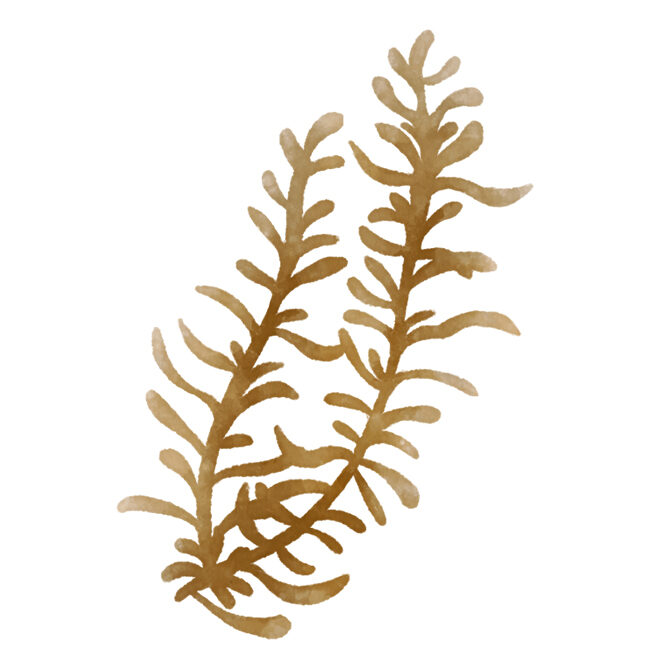海藻の基本情報

Hijiki is a brown seaweed belonging to the family Sargassaceae in the order Fucales. Alongside kombu and wakame, it is one of the important edible seaweeds in Japan. It inhabits rocky areas and can grow up to about 100 cm in length. Hijiki is an annual plant consisting of stems and leaves, but its roots are filamentous and belong to perennial plants that live for 5 to 8 years. According to one theory, hijiki has been consumed as food since the Heian period.
It contains a rich amount of dietary fiber, as well as minerals such as calcium, magnesium, and iron, and vitamins such as β-carotene and vitamin K. Especially, its content of calcium, magnesium, and iron is the highest among seaweeds.
| Per 100g | Energy kcal |
Protein g |
Fat g |
Carbohydrates g |
Dietary Fiber g |
Salt Equivalen g |
|---|---|---|---|---|---|---|
| Hijiki dried in stainless steel pot | 180 | 9.2 | 3.2 | 58.4 | 51.8 | 4.7 |
The portion of the stem known as the “main branch” is used for “naga-hijiki”. It has a firm texture and is suitable for simmered dishes, stir-fries, and salads.
The portion of the tender buds and small branches is used for “me-hijiki”. It is soft and easily blends with other ingredients. It is suitable for simmered dishes, salads, and hijiki rice.
“Naga-hijiki” and “me-hijiki” are product names and not types of hijiki.
March to May